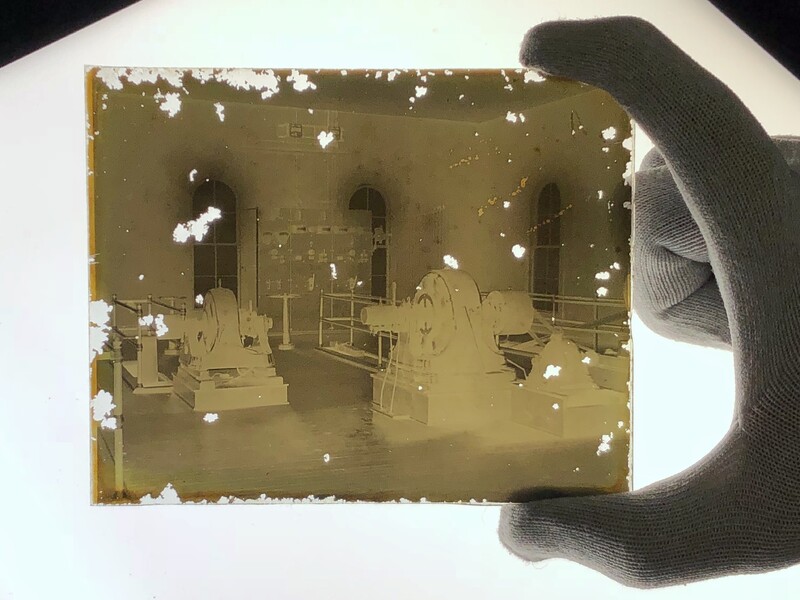A Brief History of Glass Plate Photography
A “negative” refers to the image created when light is focused through the lens and lands on light sensitive materials. In our case, that material is a chemical solution, or emulsion, spread over a glass plate. The created image is the opposite (negative), in terms of light and dark, to what the eye sees (positive). The image above shows one of the original glass plate negatives discussed in this exhibit.
The glass plate negatives in this collection are of the “dry” type, which was a significant innovation. Before their invention in 1871, photographers had to prepare the glass plates and apply emulsions, expose, and develop them while still “wet.” To process, or develop, the images, photographers needed a place that was free from light, a “darkroom.” Thus, wet plate photographers needed either to remain close to their darkrooms or recreate them in the field.
Dry plate emulsions did not have the same time limitations as wet plate. Their stability allowed for greater mobility and convenience. Photographers could wait to expose their plates and then store them back in the box until they could be developed. Nevertheless, glass plates remained fragile and surprisingly heavy.
While dry glass plates allowed the practice of photography to spread to a larger number of people, it was the invention of roll film (1887) and Kodak’s Brownie box camera (1900) which made photography widely accessible to the general public. Roll film was stable, lightweight, and a roll could be mailed to Kodak for developing and printing.
Because our photographer was using dry plates, we know they carried these heavy and fragile plates to locations to expose them, then carried them back to the darkroom to process them. The photographer likely needed considerable chemical and technical knowlege, specialized darkroom materials and equipment, and a dedicated work space to develop their plates and print photographs.
Our glass plates arrived in Cramer Lightning Dry Plate negative boxes. Mr. Cramer was a national supplier of dry plates beginning 1883. This gives us our first data point to plot a probable time frame for this collection.



